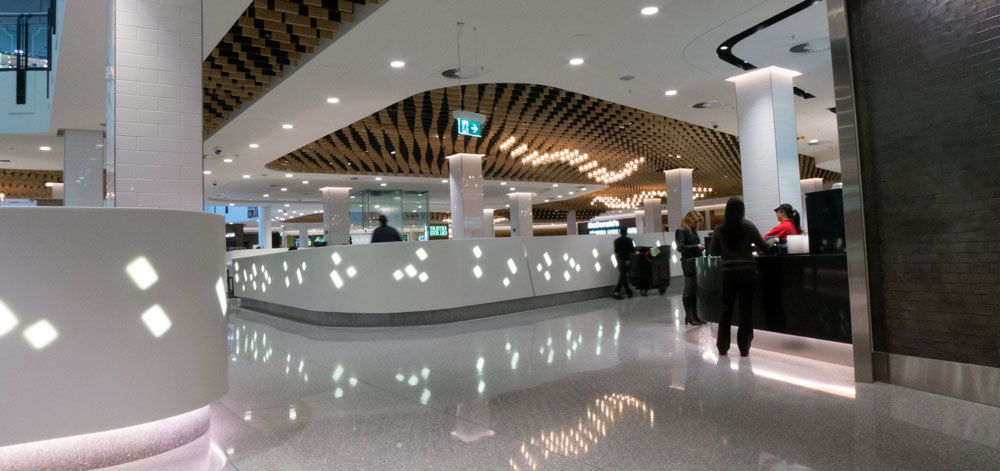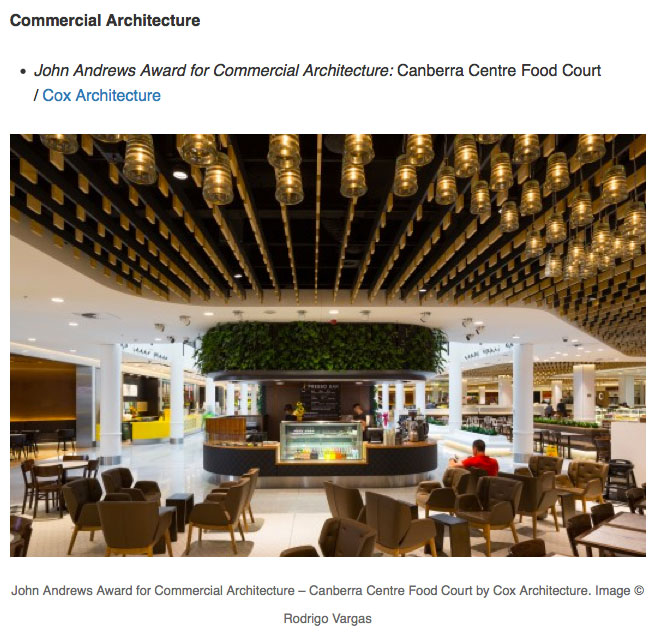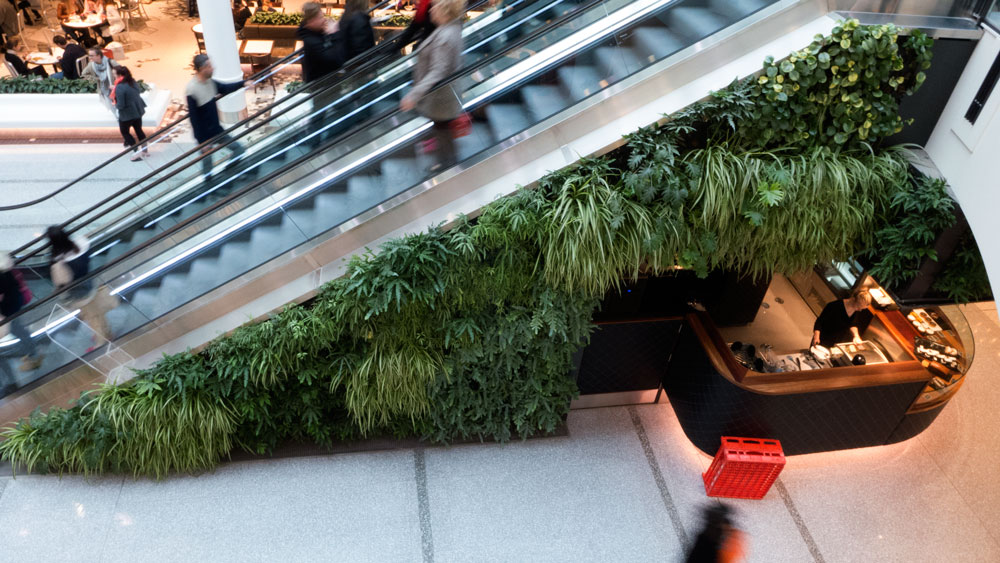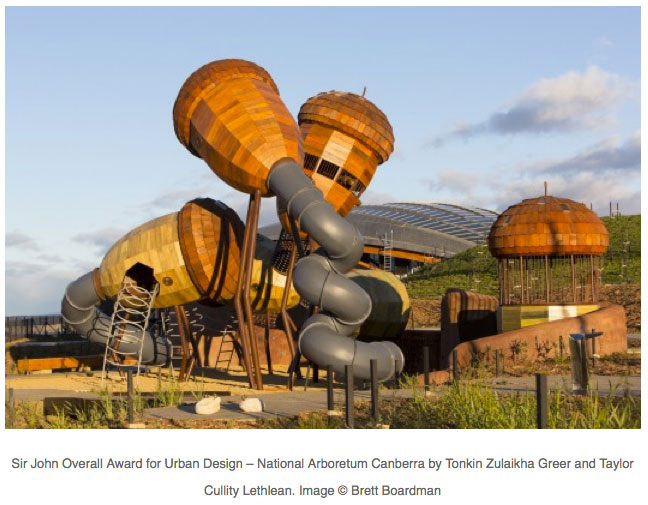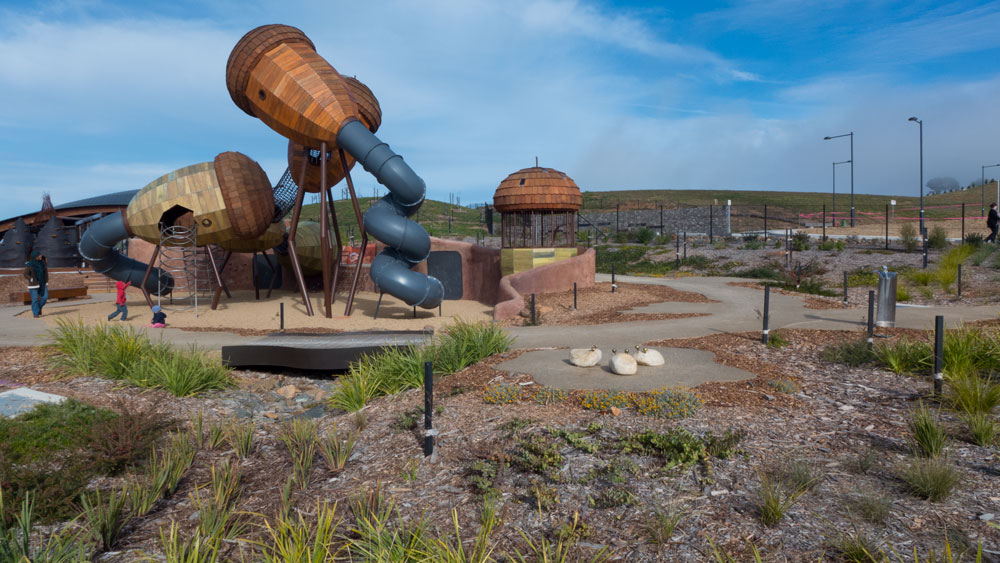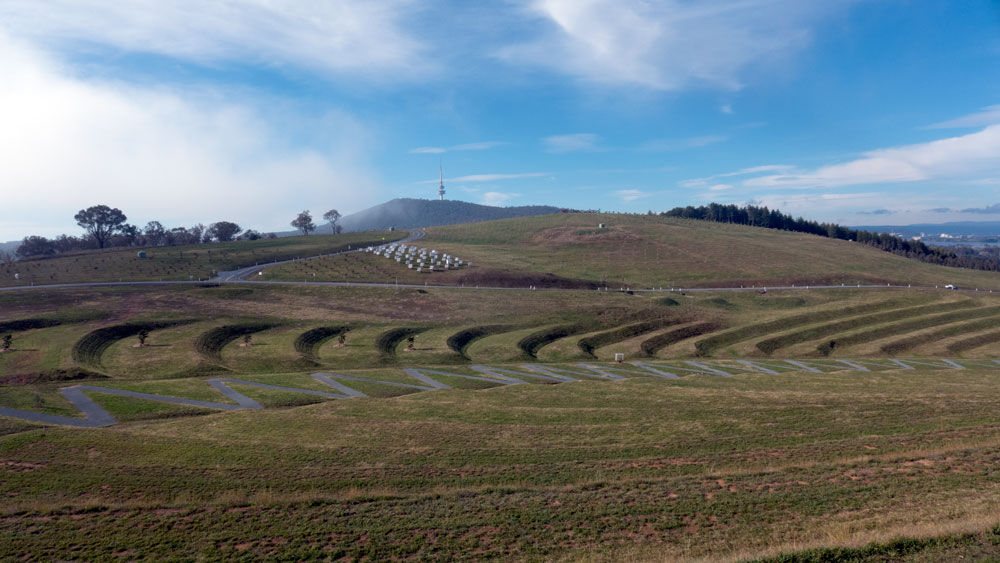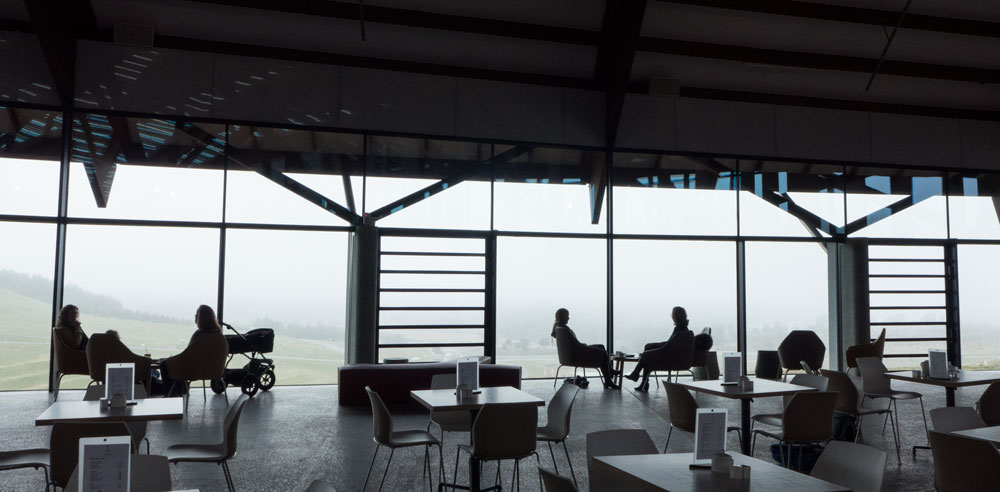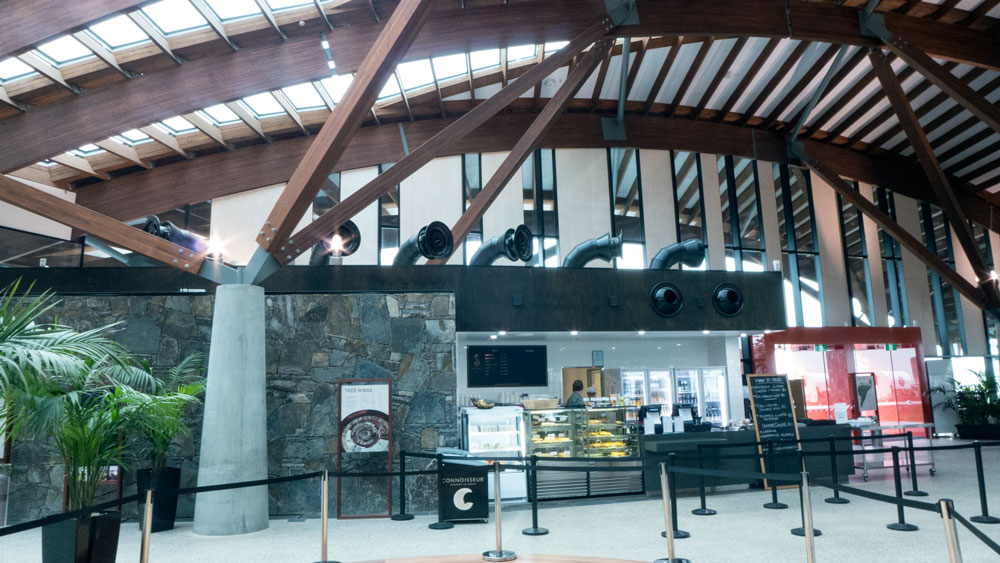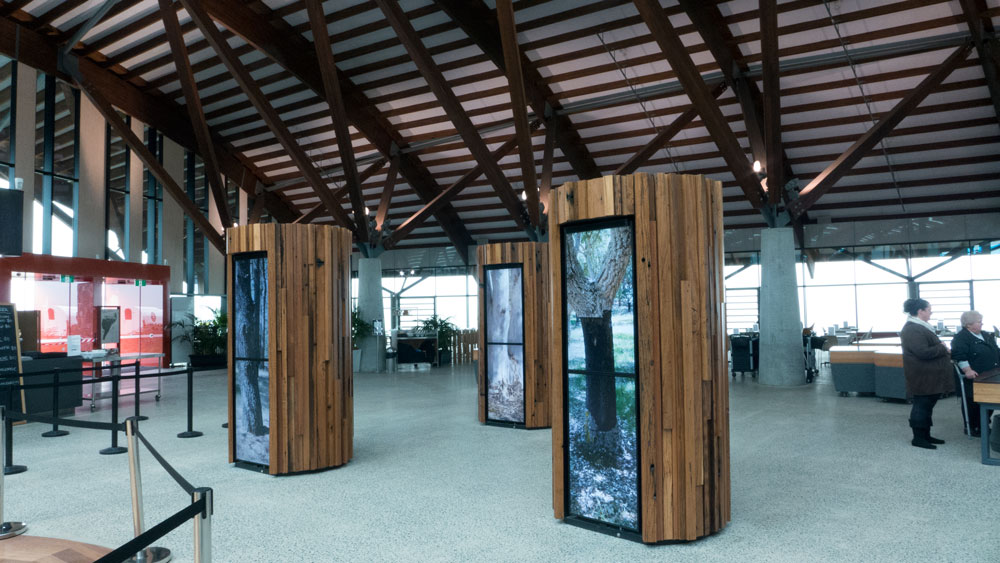Comment: Awards for Architecture
It has been a long puzzle of mine as to just what makes an architecture project an award-winning project. I know that it cannot be just who sits on the award jury and who knows who, so it must be something else.
Some local Architecture awards were announced recently. I am not familiar with many of the awarded projects. However there are several award-winning buildings that I have been through and I would agree that some form of recognition is valid.
There are others, that while looking as though they could be award-winning, I suggest they are not addressing climate change adaptation seriously and therefore should not have been awarded anything in the second decade of the 21st Century when all these issues are now urgently required to be addressed. Business as usual, even if done with glitz and gloss and other shiny bits, is not good enough for a profession that seeks to provide design leadership.
An award was given for the new food court in the local Canberra Centre mall. The previous was very dated and just a little annoying. It was not a welcoming place to go.
So my first comment is that the new food court is much better. It feels more open and its design and layout is fresh. This food court is now up to the standard one would expect from this size mall and is now on a par with those you would find in most places throughout the world. In Singapore for instance, this would be seen as competent standard of most of their new modern mall food courts. So what makes it an award-winning mall here in Canberra?
(the immediate image below from the web site on the awards)
There was that token, and I mean token, green wall attached to the side of the escalator. Wow! That should save the world I am sure. So no, I do not think it was the green wall or how the project addressed climate change adaptation in its use of materials.
In the end I sat down to enjoy a take away meal we had purchased from one of the Japanese styled food outlets. We sat and observed the fit out, the people movements and the way the shopping outlets functioned. We concluded that while the food court was much improved, we just could not see the stand out features that would make it so much better than other international standard food-courts to be honoured with an award.
So the conclusion was that this award has been given an award to recognise that the architects and everyone else involved had done a good job that pleased their clients, is pleasing to the shoppers (given what was there before), and looks good for local architecture prestige. I suppose that is what it takes.
The food we were eating was very ordinary; there was no real Japanese aesthetic to the way it was served; There was heaps of rice in a large paper bowl with some cooked foods and salads on top. It was mostly white rice. We will try something else next time.
——————————————
The major award-winning project was the National Arboretum Canberra. This received an urban design award. Now this is a real mystery!
There are some good bits to this project and some very questionable elements. The project was a big gamble by the ACT Government to establish something with a national focus knowing that if it was to work, you probably will not really know for at least another decade or two – when all those plants grow to a height to be appreciated. But right now the hills are alive with pots and small plants.
But what I really wonder about is the term used here for the award, being for ‘urban design”.
I have undertaken quite a bit of work in defining and researching what is urban design and am very aware of how loosely it can be applied, incorrectly, to many projects. This is one where the use of the term, urban design, should not have been used. I agree with the Wikipedia version – click here for the full version – but here are the crucial first words:
Urban design is the process of designing and shaping cities, towns and villages. Whereas architecture focuses on individual buildings, urban design address the larger scale of groups of buildings, of streets and public spaces, whole neighborhoods and districts, and entire cities, to make urban areas functional, attractive, and sustainable.
Urban design does not apply to a park or in this case an arboretum. I suspect this is a case of the architects wanting to apply an architecture award to a whole parkland when they have no awards for landscape works, because such awards belong to others. By awarding this an urban design award, the term has really been used inappropriately as a generalist term award to cover something they felt bound to award because of its perceived prestige in being attached to the arboretum project.
An example of a project that is clearly an Urban Design project is the ACT Government’s City to the Lake project – this is about urban design. click here.
The Arboretum is a parkland project; first it was a planning project and now that it is being built, it is a landscape design project based on fancy pattern making. Just forget trying to pretend it is urban design!
There are many elements of this landscape project that are no so good. Those slopping mounds are fancy but are a problem. They have been used before by this consultant and were rejected soundly after the other project owners after the project was finished. I suspect in time the arboretum owners may have to consider having these redesigned. They are, along with some other stuff around this project, just simple pattern making and make for good aerial photographs. But really, they are dangerous and not good design. The maintenance people must just love them!
The whole project is a puzzle – and I have written about it elsewhere – click here.
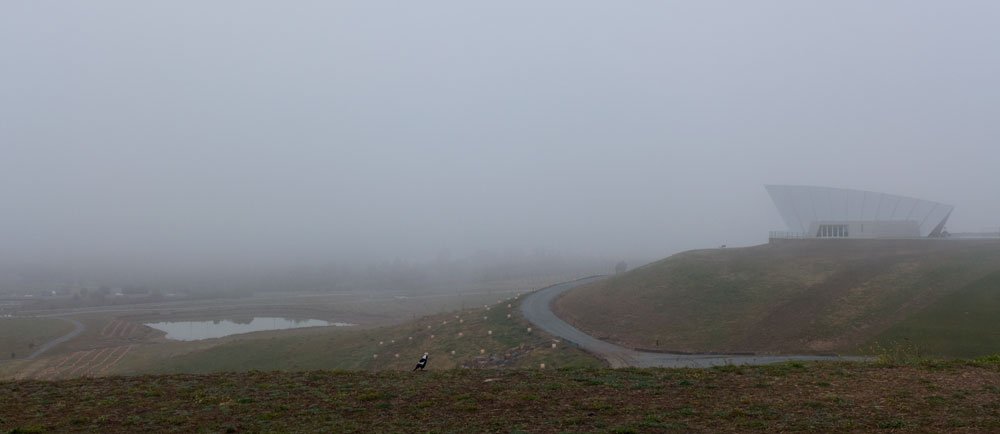
But it is worth a visit. Last time we were there on a cold and foggy morning. Eventually the fog lifted and sun shone through. It was very nice to watch this happen over a cup of coffee. It is also very good that there are some seating by the window obviously designed to suit people to meet, to sit, to chat and look out.
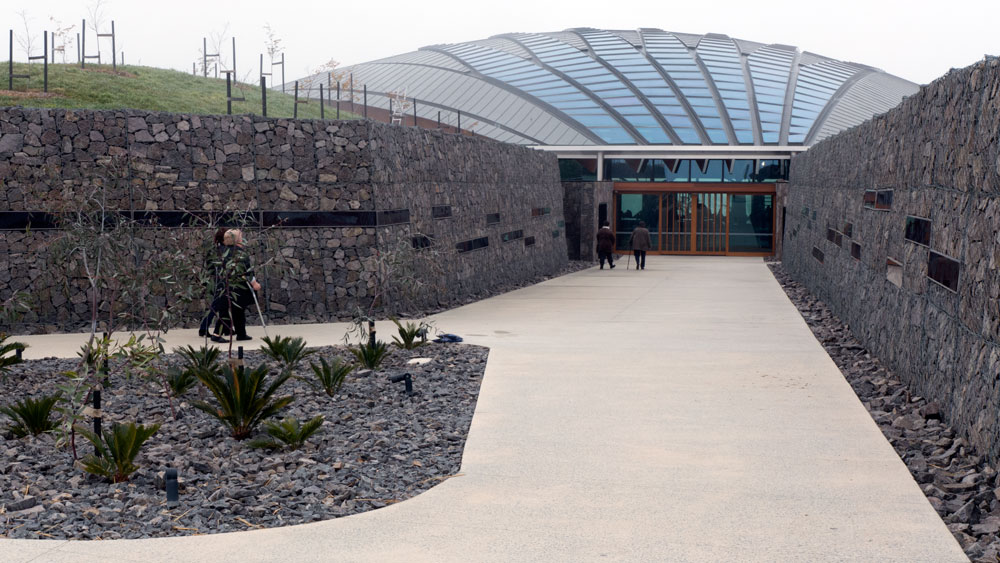
The visitor centre and cafe building is a very good piece of architecture and engineering. This probably deserves an award for architecture. But as for the whole parkland, I am not sure of it deserving an architecture or any other award.
 I was quietly amused by the visit by the Singapore President and that he was hosted at this arboretum. (click here)
I was quietly amused by the visit by the Singapore President and that he was hosted at this arboretum. (click here)
All the plants have been planted as very small plants and we all hope they will grow to be much larger – one day. There are may slopes and hills with potted plants on them, and in winter all the hills look very desolate. So the whole landscape looks bare.
In Singapore they build parklands in a big way. Take the new and very large – Gardens by the Bay. They plan ahead and grow their plants before they are planted. A couple of years in construction, and there it is with fully grown plants and heaps of greenery complete with a moat with boats and two very well-engineered domes that house arboretum museums of plants from all over the world. The Singapore President must have wondered. “They call this a parkland? We know about greenery and parklands!”
So again I am left to wonder, did this whole project deserve an architecture award. I am not convinced that the landscape work, while it is ever so big and extensive, is any more than a major piece of good pattern making. The buildings deserve their awards.
As for the arboretum being considered seriously as being an urban design project – get real! Were they really so desperate to give an award? Again – here’s the link (click here) to a definition and explanation of urban design. I suggest someone should let the architects know so they can stop making fools of themselves.
This project has been listed in the short-listed projects for the World Architects Awards to be announced in October 2014 in Singapore. So it will be interesting to see how the architects judge this project given their historic bad record on sustainability in their awards. Here’s the link to short-listed projects for 2014 World Architects Awards – click here
————————————-
for more on architecture – click here
Paul Costigan, 27 June 2014


